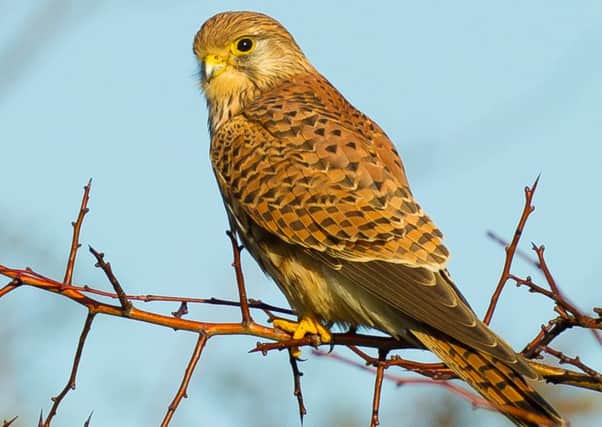Birds of prey are a magnificent sight


Our birds of prey were once facing disaster, but focused breeding programmes and fewer pesticides are helping them recover. Whilst all birds are impacted by human activity, birds of prey have probably been most influenced by direct action aimed at changing their populations.
However, more recently reintroduction programmes, nest protection schemes and provision of artificial nest sites have greatly restored populations of many species.
Advertisement
Hide AdAdvertisement
Hide AdWhether seen as an occasional rarity or an everyday sight, birds of prey catch the eye and often demand our attention. And as predators, their fortunes are important indicators of the whole food chain below them. Here are some of our local birds of prey you might be lucky enough to spot:
Peregrine falcons – Due to persecution and then the effects of pesticides, peregrines were found only far to the west on inaccessible cliffs by the 1970s. Even there many nests failed due to pesticide-induced eggshell thinning. The withdrawal of the worst of the pesticides and the introduction of protection schemes have seen a resurgence .
They have taken to nesting on man-made cliffs, high buildings and pylons. They are frequently seen along the coast in winter where they hunt. In the breeding season the best places to see them are in our coastal cities.
Kestrels – Although still a familiar sight as it hovers over grasslands and road verges, the kestrel is a bird that has not fared as well as other birds of prey in recent years.
Advertisement
Hide AdAdvertisement
Hide AdNumbers have fallen by more than a third in a couple of decades. They nest in holes in trees, old buildings and readily use nestboxes, feeding their young mainly on voles.
They can be seen almost anywhere, but open grassland sites are best. Farlington Marshes nature reserve in Portsmouth and St Catherine’s Hill nature reserve in Winchester are both good places to spot kestrels in action.
Buzzards – Hard to miss almost anywhere in Hampshire, buzzards were more or less restricted to the New Forest until as recently as the 1980s. Since then they’ve spread, slowly at first but then more rapidly, to become our most familiar bird.
Visit hiwwt.org.uk.